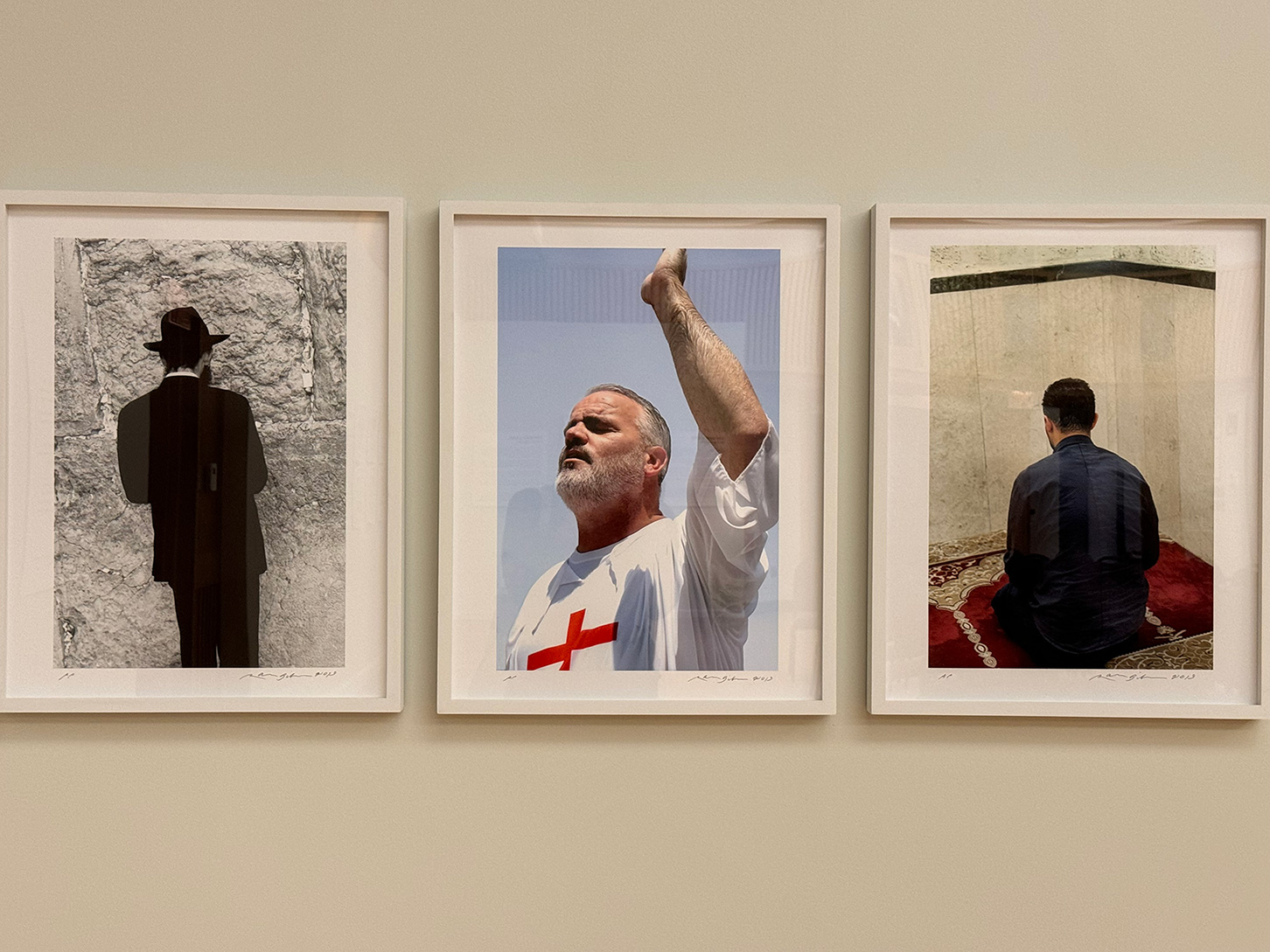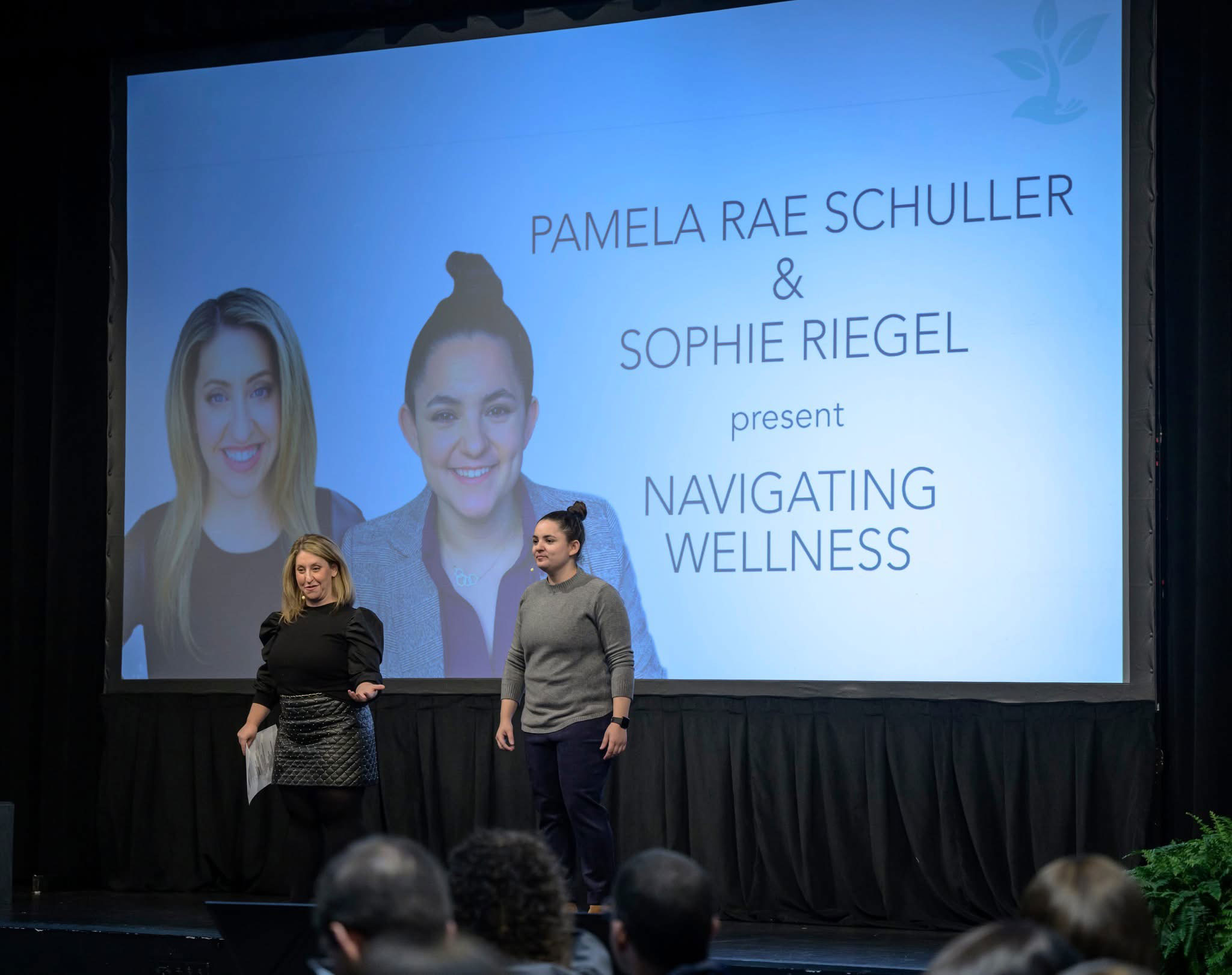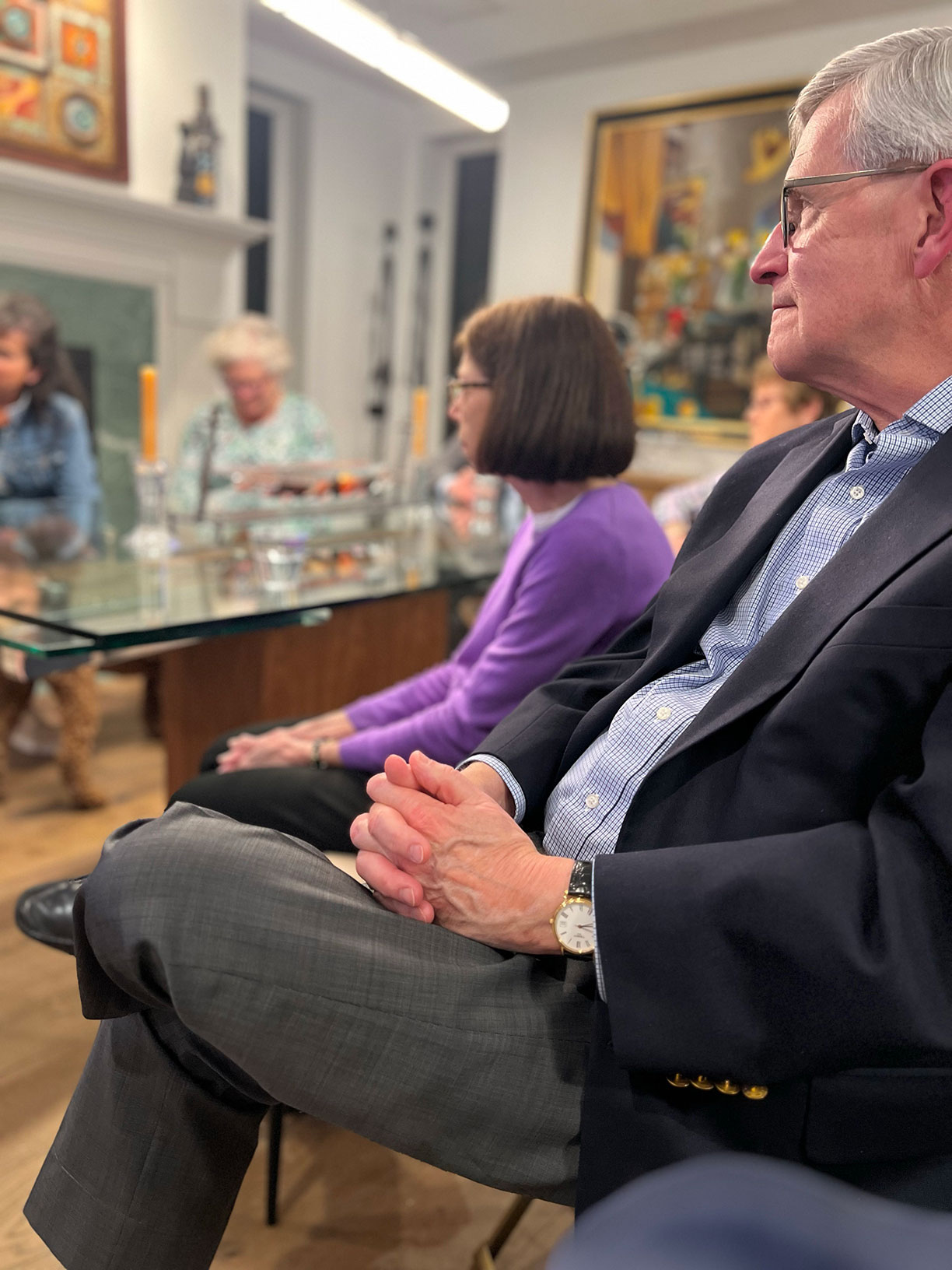“Ralph Gibson captures the majestic mountains and stark hills and valleys of this land, but never forgets its human landscapes, the auras of its Christian and Muslim and Jewish forms of religious piety, and its contrasting secular and irreverent citizenry and the vibrant pulses of its modern life.”
-Rabbi David Ellenson, z”l, Chancellor Emeritus, Hebrew Union College-Jewish Institute of Religion
By Julia Olson
Assistant Editor
The Skirball Museum on the Cincinnati campus of the Hebrew Union College debuted its newest exhibit, a photography installation by Ralph Gibson. The exhibit, called “Sacred Land: Israel Before and After Time,” features photos taken by Gibson on his first ever trip to Israel .
In her remarks at the Oct. 31st opening, Jean Rosensaft, director of HUC’s Dr. Bernard Heller Museum, said, “At a time when the trauma, anxiety and suffering of Israel’s war with Hamas, Hezbollah and Iran overwhelm us, legendary American photographer Ralph Gibson’s ‘Sacred land’ offers a compelling and hopeful outlook for the future….This exhibition conveys the fundamental humanity and underlying affinities that connect all who deem this land as sacred and expresses the photographer’s aspirations for mutual understanding and peace.”
The show’s producer, Martin Cohen, approached Rosensaft about capturing a photographic perspective of Israel back in 2018. She connected Cohen and Gibson with HUC faculty from the Jerusalem campus who were able to take them throughout the country. Cohen and Gibson would end up taking three separate trips to Israel, capturing thousands of images.
Rosensaft continued, “[Gibson’s] aesthetic outlook was inherited from his father, who was an assistant to the filmmaker Alfred Hitchcock. Indeed, it’s in the details of a particular gesture, a candid pose, a fragment, a moment, that we glimpse a deeper meaning. The essence of the images is their intimacy. We are drawn close to people, places and things, instantaneous and eternal.”
Gibson, raised in the Catholic tradition, was 80 years old when he first visited Israel and began capturing the images for this exhibition. “He approached Israel with no preconceived notions, with a kind of naïveté,” said Rosensaft. “By depicting the soul of Israel, both ancient and contemporary, with all of its complexity and diversity, ‘Sacred Land’ invites us into the eye of the photographer, who describes Israel as the ‘oldest and youngest country in the world.’”
In an exhibit booklet that accompanies the installation, the show’s producer Martin Cohen writes that “the overall narrative about Israel is that in this relatively small nation, one can witness and relive the very beginnings of world history; experience the world’s most advanced institutions in science, technology, and medicine — and everything in between. That is the central theme in these works.”
Gibson captures the striking juxtaposition between ancient and modern in his photos. Ancient objects like clay collar rimmed jars are featured next to modern architecture that echoes the curve of the jar’s rim. The photos communicate not only with the visitors, but with each other as well.
Ornate rugs are paired with aerial shots of Jerusalem’s old city, each intricately showing mirrored images of life and color. The vibrant heartbeat of the region is clear from Gibson’s photography, and Gibson’s reaction to it is detailed in his words about his visit: “While walking through the streets of Jerusalem, I sensed my humanity for the first time.”





